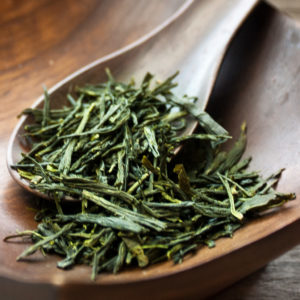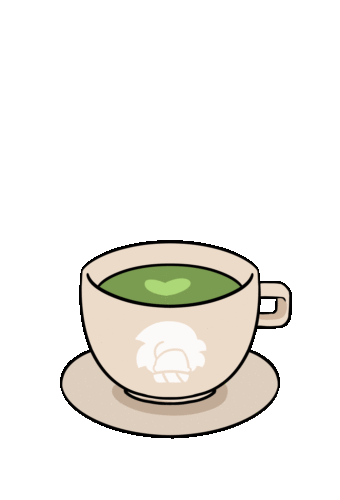
Sencha (煎茶) is Japan’s most consumed and also the most produced tea variety. This green tea owes its popularity due to the refreshing taste and the numerous variations. Depending on the time of harvesting a Sencha can either get a sweet or tarty taste. For Sencha is usally the outstanding variety Yabukita used which makes up about 77% of all cultivated tea cultivars. But, depending on terroir, are also completely different varieties such as Yutakamidori or Asatsuyu used.
Varieties of Sencha
Sencha can be divided into many different categories. But mainly, it is is distinguished by harvest time and steaming duration. A very early harvested Sencha for example is generally of a higher quality and the tea leaves are finer than a later harvested (eg. Bancha).
- Asamushi (浅蒸し), Sencha which was only slightly steamed (about 30s).
- Chumushi (中蒸し), Sencha with medium steaming (30-90s). This is the standard steaming time.
- Fukamushi (深蒸し), deep steamed Sencha (1-2 min). It is often marketed as Fukamushicha.
- Jo Sencha (上煎茶), fine Sencha.
- Toku Jo Sencha, (特上煎茶), extra fine Sencha.
- Hachijuhachiya Sencha (八十八夜), tea that was harvested 88 days (literally nights) after Risshun, the beginning of spring.
- Shincha (新茶) is the first harvest of a year.
- Kabusecha or Kabuse Sencha (かぶせ茶) is like Gyokuro a shaded tea. It’s often regarded as a own tea variety.
Production of Sencha
Sencha is nowadays mostly harvested by machine and immediately steamed in order to prevent oxidation (kill green). This method, also called the Japanese method, ensures that the tea tastes very fresh. However, when the Chinese method is used the tea leaves are roasted instead and taste therefor rather nutty.
After the steaming process the leaves are rolled into needles and dried. The technique of ??rolling green tea into needle shape derived from Uji.
Preparation
The easiest and safest way to prepare Sencha is to use a Kyusu teapot. Thoes tea pots have a fine sieve which restrains leaves and small particles. Experienced tea drinkers however may also use a simple Gaiwan. The water temperature should be depending on the quality of the leaves between 60° C and 80° C. Very fine teas such as Shincha or Kabusecha should be rather infused with a lower temperature while standard Sencha can also be prepared with higher temperatures. The steeping time should be about 1 – 2 minutes for the first infusion and about 30 seconds for each sequential. As a standard, 5g tea leaves per pot has established. But, depending on personel preference are various other amounts possible.
Which Sencha is the best?
What’s the best Sencha is needs everybody to decide for themselves. Sencha from Kagoshima for example, tends toward a sweet taste because there are often special varieties such as Saemidori or Okumidori grown which do not grow in the north because of the frost. Also, Sencha from a earlier harvests or from shaded tea bushes taste sweet while Sencha from summer harvests taste rather tart and bitter. Sencha from Korea (Jeoncha) is produced using the Japanese method and is a favorable alternative. Also, a friendly tea farmer from northern Thailand grows Yabukita cultivar as well. But, as his tea isn’t steamed but roasted it tastes more like a Chinese green tea then Sencha.

